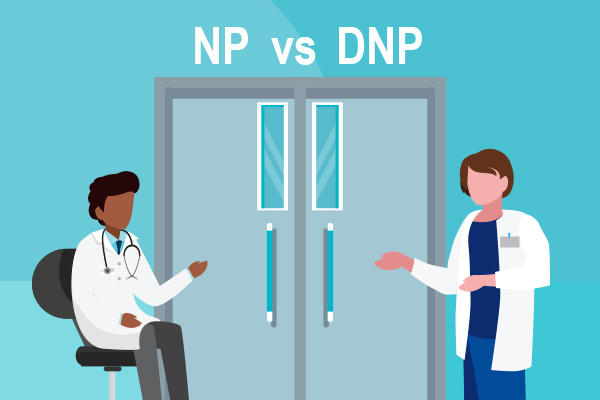Featured
Tags
Share
- Home / Blog / Nursing Today / FNP Graduates Share 4 Tips for Practicum
FNP Graduates Share 4 Tips for Practicum

All Master of Science in Nursing - Family Nurse Practitioner (FNP) specialty track students complete a practicum, but not everyone knows what to expect.
You might feel excitement, anticipation and a slew of other emotions prior to starting, but rest assured others have walked this path before you and have cultivated some wisdom in the process.
From finding the right preceptor, to helpful app recommendations, these FNP graduates share some tips that helped them find success throughout the experience.
1. Network, Network, Network!
When it comes to securing a practicum site, it’s essential to work every angle – friends, your current employer, Chamberlain graduates in your network, and even your own healthcare provider.
“I spoke to anyone who I thought may know someone who was a potential preceptor,” said Kelly. “I also went online and looked up family practices and pediatricians and left a packet I created with their front desk. I looked for small practices.”
“My preceptor was my nurse practitioner,” said graduate Michelle Janssen. “As soon as she found out I was going back to school she told me she wanted me to work with her.”
Beyond your personal network, a targeted search and proactive follow-up can get you where you need to be.
Graduate Christina Checrallah said persistence was the key to her success.
“I secured my practicum location by doing research and calling until I found several options that would take FNP students,” she said. “I was persistent and didn’t wait for a call back. I would call to follow up myself.”
Read More: 8 Graduates Share Advice on How to Find a FNP Practicum Site
2. Be Proactive to Get the Most Out of the Experience
When looking for a practicum site, it’s important to consider the experience the preceptor will be able to provide.
“My preceptor had an education degree, which made it seem like she loved having students and was dedicated to teaching,” Michelle said. “She was willing to share not only her success but also her hardships. She was very open and that helps new FNPs.
Jessica agreed. “It was important for me to find someone that likes to teach and is willing to educate on the ‘WHY’ of what they do.”
Once on site, raise your hand and lean into every opportunity for learning. Graduate Bridget Haynes found that taking an active role in her learning – from asking questions to proactively requesting feedback -- helped her grow the most.
“My best advice is to really focus on mastering assessments at first and be sure to ask your preceptor to reassess if there is a finding that is unusual or questionable,” Haynes said. “Often, issues do not present in the classic style and it really helps to build one’s knowledge base. Also, when presenting a case to the preceptor, especially in the first practicum, ask if there is anything you missed or should have considered in making a diagnosis.”
3. Come Prepared and Stay Organized
Throughout the practicum experience, you will want to document your experiences in a journal or log. List the competencies you gained formally or informally through the practicum. And, it’s essential to stay organized says graduate Jessica Ward.
“Be prepared and organized. Use a planner, download the FP Notebook and Epocrates® apps,” she said. “Ask about the top conditions seen in the practice and know them well. Also obtain the Bright Futures Pocket Guide for use when seeing pediatric patients.”
4. Stick to the Basics
It may go without saying, but the same rules apply for your practicum as with any other job in the healthcare setting.
“Show up on time, ask questions and don’t pretend to know things you don’t,” she said. “Your preceptor can help you advance your career by being a resource, mentor and reference so you want to be professional and make a good impression.”
And most importantly: “Study, study, study! Practicum was actually very fun and it’s where I learned the most!”
Interested in learning more about the MSN – FNP track? Get started here!
By Meg Tokars
More from Nursing Today
Request More Information
To receive the Chamberlain University Program Guide, including associated career paths, please select a program of study.







